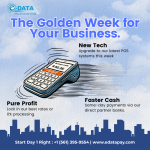Are you protected from ransomware virus attacks?
It encrypts your data or locks your operating system if ransomware or an encryption Trojan is installed. Ransomware demands a ransom for the release of a “digital hostage,” such as a file. Preparation is key if you want to avoid being confronted with a locked laptop or an encrypted file. Antivirus software and careful monitoring can greatly lower the risk of infection. Anti-ransomware can help you from having to pay extortionate amounts in order to have your data decrypted. For example, a ransomware virus may be spread via vulnerable websites, software downloads, or spam letters. Ransomware attacks both small and large businesses alike.
These destructive, financially-motivated attacks where cybercriminals demand payment to decrypt data and restore access have been studied and documented for many years. Today’s reality shows us that these attacks have become more pervasive, impacting essential services like healthcare or pumping gasoline. Yet despite attempts to stop this threat, ransomware continues to impact organizations across all industries, significantly disrupting business processes and critical national infrastructure services and leaving many organizations looking to better protect themselves.
Individuals or organizations are discouraged from paying the ransom, as this does not guarantee files will be released. However, the FBI has advised that if Cryptolocker, Cryptowall or other sophisticated forms of ransomware are involved, the victim may not be able to get their data back without paying a ransom.
During a ransomware hack, attackers infiltrate a target’s computer system and encrypt its data. They then demand payment before they will release the decryption key to free the system.
If your company decides to pay the ransom, the researchers suggest using these negotiating tactics:
- Be respectful: This is a business transaction, so avoid making threats and leave emotions out of it.
- Ask for more time: Adversaries are often willing to extend the timer if negotiations are ongoing.
Often the ransomware (and other malware) is distributed using email spam campaigns or through targeted attacks. McAfee® products leverage a number of technologies that help prevent ransomware. The following McAfee products and associated configurations are designed to stop many types of ransomware.
Ransomware prevents you from accessing the files stored on your computer. This malicious software essentially holds your files hostage, which can wreak havoc on an extremely broad scale for larger organizations. While a ransom is demanded, there’s no guarantee your data will be restored if you pay that ransom.
The fastest way to recover from ransomware is to simply restore your systems from backups. For this method to work, you must have a recent version of your data and applications that do not contain the ransomware you are currently infected with. Before restoration, make sure to eliminate the ransomware first.
If a company doesn’t pay the ransom, the cybercriminals will still profit from selling the victim’s data. If a company does pay the ransom, their money gets disseminated all over the dark web. Ransoms don’t just go to one person or organization – even an ancillary participant in a ransomware attack will profit.
Regardless of the size of your organization, ransom amount requested, extent of the damage or the chosen method of ransomware recovery, you should always report a ransomware attack to law enforcement.
Can ransomware be decrypted?
If you want the technical details, the Infosec Institute has a great in-depth look at how several flavors of ransomware encrypt files. But the most important thing to know is that at the end of the process, the files cannot be decrypted without a mathematical key known only by the attacker.
In the end, the federal agency does not universally prohibit companies from paying ransomware. It doesn’t have the legal power to do so. Many companies will continue to pay.
Start by educating your employee to be aware on a personal level.
How to protect yourself against ransomware infestation?
You should never click on links in spam or on websites you don’t recognize. There is a risk that your computer will become infected if you click on malicious links.
Do not respond if an unknown caller, texter, or emailer asks for personal information through phone, text, or email. In the event of a ransomware attack, cybercriminals may attempt to gather personal information about you in order to personalize phishing messages to you. Contact the sender immediately if you have any doubts about the message’s legitimacy.
If you receive an email with a suspicious attachment, do not open it: Email attachments are another method through which ransomware can infect your system. Do not open any attachments that appear suspicious. Pay attention to the sender and verify that the address is correct to ensure that the email is legitimate. It’s best not to open attachments if the request is for you to run macros first. A malicious macro will be activated if you open the attachment if it is infected.
Don’t connect unfamiliar USB sticks: Never use a computer to connect unknown USB sticks or any other storage media. An infected storage medium may have been left out in the open by cybercriminals to attract someone to use it.
Update your software and operating system regularly. Keeping your software and operating systems up-to-date is a good way to keep yourself safe from malware. Be sure to take advantage of the most recent security patches while doing updates. Cybercriminals will have a more difficult time taking advantage of flaws in your software.
Only download from known sources: Downloading software or media assets from untrusted sources reduces your vulnerability to ransomware. Downloads should only be made from trusted sources. The trust seals can be used to identify certain kinds of websites. Use “https” rather than “http” in the browser address bar of the website you are viewing. As an alternative, a shield or lock icon in the address bar may show that the page is secure. You should also be careful while downloading anything to your mobile device. Depending on your device, you can rely on either the Google Play Store or Apple App Store.
Utilize virtual private network (VPN) services on public Wi-Fi networks: Ransomware can be prevented through careful use of public Wi-Fi networks. Public Wi-Fi networks increase the risk of a cyberattack on your computer. Stay safe by avoiding public Wi-Fi and utilizing an encrypted virtual private network (VPN).
What are the advantages of anti-ransomware software??
Ransomware can be prevented by using the proper anti-ransomware software, in addition to these other procedures. Preventing ransomware can be as simple as installing virus scanners and content filters on your mail servers. Using these apps will help you avoid spam with hazardous attachments or URLs.
Security software such as Kaspersky Internet Security should also be installed to protect your computer’s network traffic. Real-time security is provided by this program, which can stop infected files from downloading or streaming in the first place. As a result, your machine is safe against ransomware infection and fraudsters are kept at distance. The anti-ransomware tool provided by Kaspersky can also help. Detecting and blocking ransomware is made easier with the help of this program, which performs scans to protect your data from both local and remote-access threats.
You’ve already made a huge step in the right path if you installed the correct software. To get the most out of your internet security solution, make sure to keep it updated on a regular basis. The latest security patches are included in each update, which enhances defenses against ransomware..
Avoid the worst-case situation by safeguarding your data.
Make sure your backups are safe by following these tips.
A ransomware infection that renders decryption impossible should always have a copy of your data in a safe place on your machine. Take advantage of an external hard disk and detach it from your computer after producing the backup. As soon as the ransomware starts encrypting files, your hard drive will be encrypted as well. Your data should be mirrored at least once a month.
Backup software: a safety net or a security risk?
For those who choose not to preserve their data manually, backup software is available. However, you must use caution in this instance as well. To put it another way, there are some “security products” that are actually Trojans. All files in a system can be accessed by backup software because that is one of its key functions.
A direct connection to the service provider makes it simple for thieves to add new features and orders. These can be dangerous and the user may not be aware of them. Make sure you do your research before purchasing backup software to avoid this problem. There are existing plug-ins for several security solutions that allow you to create backups, such as Kaspersky Total Security. You won’t have to look for third-party providers if you use this type of plug-in.
With good negotiation tactics, in most cases initial ransom demands can be negotiated down by half – or more
Be prepared
Develop a comprehensive, defensive security posture to protect against ransomware









